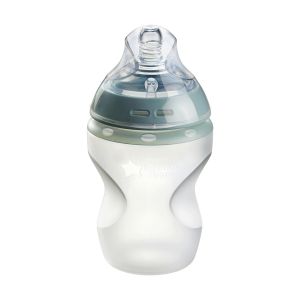While it's mild for some babies, teething can trigger some symptoms that are difficult to manage. It can be a frustrating time for both little ones and their parents alike, especially because young babies can't talk to communicate that they're in pain or feel uncomfortable as their first teeth grow in.
If you're in the midst of teething stress right now or think your little one is about to reach their next development milestone and start teething, try not to worry! Although it's a difficult phase, it will pass, and there are some tell-tale signs that you can look out for to know when your little one may need soothing and some extra cuddles and comfort.
Let's run through when teething starts, what the first signs of teething usual are, and how you can safely check if your baby has started teething.
When does teething start?
Although all little ones are different, most babies typically start teething at around six to nine months old. But this can vary between three and 12 months of age, and in some rare cases, babies can be born with their first teeth.
Has my baby started teething? Early teething symptoms to look out for
You can look for the following signs and teething symptoms to know for sure if their first ever tooth is due to make an appearance:
- Excessive drooling: Babies will dribble a lot more than they usually do when they're teething, so get your bibs ready!
- Chewing on everything and anything: Teething babies have sore and tender gums, and chewing gives them relief, so they do lots of it.
- Irritability and grumpiness: Your baby may cry more, or be irritable, grumpy, and restless. And really, who can blame them?!
- Slight increase in temperature: A slight increase in your baby's temperature can also be a sign of teething. Remember though, a baby's temperature shouldn't be over 38��C. If it is, contact your doctor or health visitor for advice.
- A loss of appetite: Who wants to eat when in pain? It's likely that your baby will go off their food for a while, so try to keep their intake of fluids up with lots of water. You can also see if you can tempt them with a nice cold treat to soothe their throbbing gums.
- One flushed, red cheek: This is a common sign of teething. Your baby's cheeks turn red and feel warmer when they are teething because the tooth that's coming through the gum causes irritation and increased blood flow.
- A facial rash around the mouth or chin: Teething often leads to more drooling. That extra moisture can end up causing irritation to the sensitive skin of your baby.
- Rubbing their ears: The nerves around the gums, jaw, ears and cheeks are connected, so they can all be affected by teething pain. If you see your little one rubbing around their jaw or tugging their ear, this could be a sign that they're teething. However, it's good to note that little ones with ear infections may also show signs of pulling on their ears. If it's been a few days and they continue to do this, you should contact your doctor.
Other symptoms parents sometimes associate with teething but aren't generally linked to teething include...
- coughs and congestion
- disturbed sleep
- vomiting
- an increased number of poos, runny poos and nappy rash
- showing a loss of appetite when you're trying to feed them liquids
- rashes in other areas of the body than the face
- a fever of over 38��C.
Fever and symptoms such as body rashes, vomiting and diarrhoea, rashes, and vomiting are not likely to be linked to teething, so you should always talk to your doctor if your baby is experiencing these.
How to check for teething signs
To know for sure if your baby is teething, you can...
- Lay them on your lap and look inside their mouth by moving their top or bottom lip out of the way, or gently opening their jaw.
- Look closely at their gums to see if they appear irritated, swollen or red.
- Use a clean finger to gently feel around their upper and lower gums to check for tooth buds. These are small bumps along your baby's gum with a hard milk tooth underneath.
